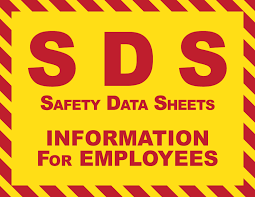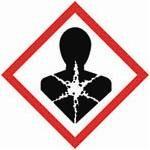SDS GHS Update
By: Teah Jazey, PRODUCT SAFETY AND REGULATORY AFFAIRS SPECIALIST, email
As I am sure you’ve heard by now, the Canadian GHS revision 7 is upon us! As the amendments were originally posted in December of 2022, we are currently in the 3-year coming into force period. Below we provide an overview of some of the changes that you will see in the new GHS 7 in Canada, impacting WHMIS and the Hazardous Products Regulations (HPR).
The US is also in the process of updating to GHS revision 7 to align with Canada; this will effect OSHA’s Hazard Communication Standard (HCS). Note that OSHA has not posted the final rule for their proposed modifications and updates to the meet GHS revision 7, this means that so far nothing has been finalized in the US.
It is important to note that during this 3-year transition period, companies can choose to comply with the former HPR or the new, amended HPR. One must be chosen; it may not be a combination. This means that your safety data sheets and your labels & packaging must match. By the end of the transition period, you will need to be compliant with the new amended HPR.
Now let’s take a look at the the key changes to the HPR with the adoption of the Globally harmonized system of classification (GHS) revision 7/8.
What are the Major Changes to the Canadian Hazardous Product Regulations
New Physical Hazard Class
You may have seen that Canada is adopting GHS 7/8 and wondered what that means. One of the major changes that brings GHS revision 8 into play is the new physical hazard class that is being added – “Chemicals Under Pressure”.
Here is a brief summary of the changes that come along with this new hazard class:
- Category 1, 2 and 3 will be available for this classification;
- There will be additional hazard statements and precautionary statements, hazard symbols and signal words required; and
- If classified as Chemicals Under Pressure, a product cannot also be classified as: Flammable Gases, Flammable Solids, Flammable Liquids, Aerosols, or Gases Under Pressure.
Modifications to Physical and Health Hazards
Although there are no other new hazard classes coming with GHS revision 7 in Canada, there are however a few other changes for both physical hazards and heath hazards.
- “Flammable Aerosols” will now be classified as “Aerosols” and will have Category 1, 2 and 3 (for non-flammable aerosol products)
- New subcategories for “Flammable Gases” and the removal of “Pyrophoric Gases” which will now fall under “Flammable Gases”
- Additional statement option for “Combustible Dusts”: “May form explosible dust-air mixture” or “May form combustible dust concentrations in air” can be used
- New definitions available for “chemically unstable gases” and “pyrophoric gases”
NOTE: Chemical manufacturers and importers of products such as aerosols will be impacted by these changes as some of the biggest changes are seen in the aerosols category.
What are the Major Changes to the Safety Data Sheet
Section 3 Composition/Information on Ingredients:
We also see changes in this section of the Safety Data Sheet that allow for tighter concentration ranges to be used if they fall under the already prescribed ranges. See acceptable chemical concentration ranges below:
a) from 0.1 to 1%;
b) from 0.5 to 1.5%;
c) from 1 to 5%;
d) from 3 to 7%;
e) from 5 to 10%;
f) from 7 to 13%;
g) from 10 to 30%;
h) from 15 to 40%;
i) from 30 to 60%;
j) from 45 to 70%;
k) from 60 to 80%;
l) from 65 to 85%; and
m) from 80 to 100%.
Note that a trade secret statement must immediately follow the use of ranges. For example: “The actual concentration has been withheld as a trade secret”. You can learn more about Canadian trade secrets in this article on HMIRA claims.
In addition, you will now be required to include hazardous chemical ingredients that are at or above the relevant cutoff level regardless of it contributing to a hazardous classification of the overall product.
Section 9 Physical and Chemical Properties:
There are changes that will appear in this section as well. A new property has been added for Particle Characteristics and the existing property for Evaporation Rate will no longer be required to appear in this section. Some other the other properties will be renamed so watch for that change to appear as well.
This list of changes is not exhaustive and we would highly recommend you review the posted changes to the regulations to ensure you have full understanding of the changes that have been made.
As mentioned above it is important to keep in mind that though the Canadian HPR has been updated the GHS Revision 7/8 and is now proceeding into the 3-year transition period, the United States Hazard Communication or Hazcom 2012 has NOT posted the final rule. We are unable to confirm the changes and how closely they align to the Canadian GHS Revisions at this time.
Frequently Asked Questions
How often do safety data sheets have to be updated?
In Canada there are requirements to update an SDS when significant new data is discovered about the product, likely if a classification change has occurred. The timelines for when this update is required has been updated along with the new GHS Revision 7/8 update in Canada.
Canada used to have a 3-year mandatory update on SDSs but many provinces have gone away with this rule. If you are selling across Canada, it is best practice to review and maintain your SDSs every 3 years to stay compliant with all provinces. Please read our article on SDS Expiry to find out more about updates and compliance.
Ultimately, updates are important for the safety of a product’s downstream users; labels and safety information play a vital role in worker protections.

Labelling Small Capacity Containers and Bulk Shipments:
As per Section 5.4 of the Hazardous Product Regulations (HPR), if a product is 100 mL or less some labelling elements will be exempt from appearing on the container. Though this is not a change under the HPR is it always good to know about exemptions that might apply to your product! As you might expect, there indeed exemptions to Bulk Shipments that can apply. These are similar to the small containers exemptions but will have different requirements that will have to be to qualify for the labelling exemption.
How can Dell Tech Assist?
Dell Tech can assist you with any questions about these new Canadian and US GHS requirements. We have experience navigating through these regulations and are happy to help you through these updates.
We are also able to help you determine if your product falls under any of the many exemptions found in the Canadian Hazardous Product Regulations or OSHA’s Hazard Communication Standard, or Hazcom 2012.
Our SDS services include authoring safety data sheets, technical translations, raw material classification and more.






